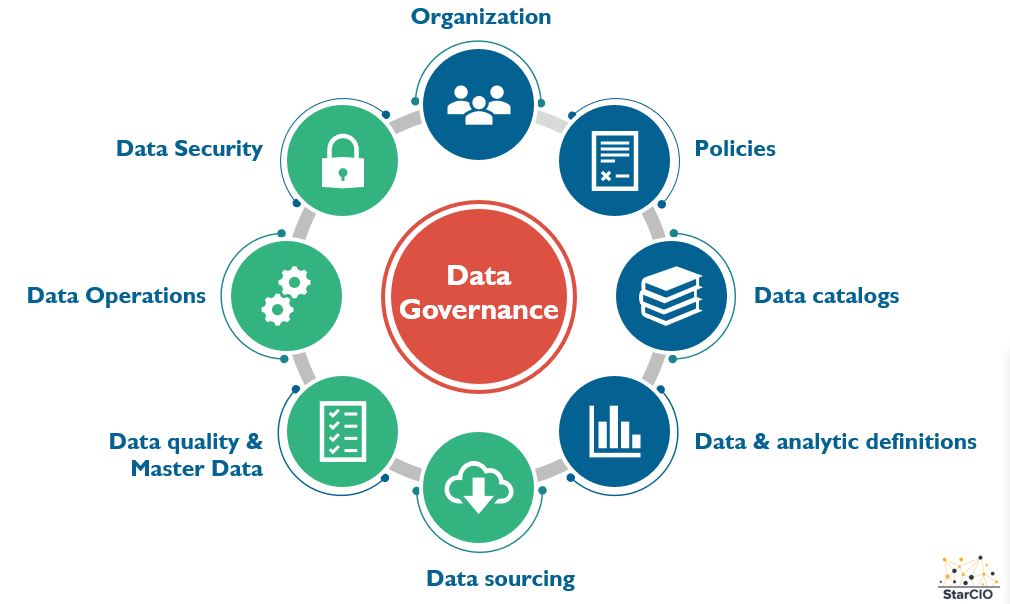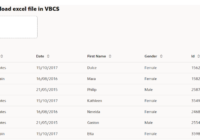Table of Contents:-
- Establish Clear Objectives and Goals
- Secure Executive Sponsorship
- Create a Data Governance Framework
- Define Roles and Responsibilities
- Implement Data Quality Management
- Ensure Data Security and Privacy
- Promote Data Stewardship
- Utilize Data Governance Tools
- Encourage Collaboration and Communication
- Monitor, Measure, and Improve
In today’s data-driven world, organizations are increasingly recognizing the critical importance of robust data governance. According to a 2023 survey by Gartner, 78% of companies cited data governance as a top strategic priority, up from 65% in 2021. This surge underscores the growing awareness of the role that effective data governance plays in ensuring data quality, security, and compliance. Moreover, a report by Forrester revealed that organizations with strong data governance practices are 2.5 times more likely to outperform their peers in terms of data-driven decision-making and operational efficiency.
As the volume and complexity of data continue to grow, driven by advancements in AI, IoT, and big data technologies, the need for a structured approach to data management becomes even more pressing. Poor data governance can lead to significant risks, including data breaches, regulatory fines, and loss of customer trust. Conversely, a well-implemented data governance model can drive business value by enhancing data accuracy, facilitating compliance, and enabling more strategic use of data.
Identify the data assets in your business
For data to work well for your business, it is important to identify how to choose, collect, store and use it efficiently. This is because data is already abundant and can be easily lost, if not taken care of. To do so, you can start taking inventory of the data present in your organization, defining its sources (CMS, website, apps, social media, marketing campaigns etc.) and then identifying the pain points where there is loss of value due to poor data management. For this, keep 4 important V’s in mind:
- Volume: With the rising use of connected devices, the development of geolocation and the growth of analytics in marketing, the volume of data to be stored and processed is abundant and will continue to grow in the future. Identify the quantitative and quantity of data in your databases to help your data management.
- Variety: Data is often termed to be complex and diverse along with structured/unstructured depending on how it is collected and stored. It can also be collected from a number of different information sources. Try to capture it in multiple places, centralize it and cross-check it to map your data in the exhaustive way.
- Value: The data you use must be seamless with your business and marketing goals to create value for the brand and for your clients/customers depending on the nature of your business. In a world where there is abundance of data, it is critical to reconcile the data that is important for your business and work on it to make it profitable for the business.
- Velocity: As we live in a fast world, personalization, and predictive analytics, we need to act faster and proactively to meet changing customer needs. Always go with a high-performance software with powerful features that is still flexible and includes machine learning. It is a good practice to audit your infrastructure to choose the most appropriate tools and create a good technical base.
Common Data Governance Strategy

Apart from data diagnosis, it is crucial that all company departments are involved in data usage, from management to the operations and admin teams, along with all the team managers. All employees must understand the problems and advantages of shared, quality data. You must think about the below mentioned phases:
- Conduct interviews with various departments to identify the existing data situation, understand particular organizational requirements and expectations regarding data governance. Make use of this opportunity to make teams aware of the possibility of exploiting poor-quality data.
- Conduct workshops to create a methodological framework for data governance.
- Pursue real use case analysis of a particular business issue linked with a particular scope of data with the help of employees. For instance, in e-commerce, this could mean focussing on errors in product packaging dimensions, in cascade, lead to logistical difficulties and/or cart abandonment due to increasing delivery costs.
The main idea is to develop interest and launch the data governance project with receptive and proactive employees. It is best to unit the teams around the drafting of a shared data governance charter that includes the mission, main objectives and roles.
In the end, establish and communicate the strategic objectives to the whole business or particular to each business department, and then determine organizational performance indicators so everyone knows their roles and responsibilities.
1. Establish Clear Objectives and Goals
Establishing clear objectives and goals for your data governance program is essential for aligning it with your organization’s strategic vision. Begin by identifying the specific issues and opportunities that data governance aims to address, such as improving data quality, ensuring compliance, or enhancing data security. By setting measurable targets, you can track progress and demonstrate the value of the data governance program to stakeholders.
2. Secure Executive Sponsorship
This is critical for the success of any data governance initiative. It provides the necessary authority and resources to enforce data governance policies and drive organizational change. Their involvement signals the importance of data governance to the entire organization, helping to gain buy-in from various departments.
3. Create a Data Governance Framework
A well-defined data governance framework is the backbone of an effective data governance program. This framework should include policies, standards, and procedures that govern how data is managed, used, and protected within the organization. It should cover all aspects of data governance, including data quality, data management, data security, and compliance.
4. Define Roles and Responsibilities
Clearly defining roles and responsibilities is vital for the smooth execution of a data governance program. Assigning specific roles such as data owners, data stewards, data custodians, and data users helps ensure accountability and clarity in data management processes. Each role should have a well-defined scope of responsibilities and authority, ensuring that data governance tasks are executed efficiently. This structured approach helps in avoiding overlaps and gaps in responsibilities, promoting a coordinated effort towards maintaining data quality, security, and compliance across the organization.
5. Implement Data Quality Management
Implementing data quality management processes is necessary for maintaining the accuracy, completeness, and reliability of data. This involves setting data quality metrics, conducting regular assessments, and addressing data quality issues proactively. By establishing clear standards and procedures for data quality management, organizations can ensure that data remains consistent and trustworthy, supporting informed decision-making. Regular monitoring and continuous improvement initiatives help in identifying and rectifying data quality problems, fostering a culture of data excellence and reliability.
Also Read: 10 Ways To Combat Data Breaches In Your Business
6. Ensure Data Security and Privacy
Ensuring data security and privacy is a fundamental aspect of data governance. Developing robust data security policies helps protect sensitive information from unauthorized access, breaches, and other security threats. Compliance with data privacy regulations such as GDPR and CCPA is essential to avoid legal penalties and build trust with customers. Implementing necessary safeguards, such as encryption, access controls, and regular security audits, ensures that data remains protected throughout its lifecycle.
7. Promote Data Stewardship
Promoting data stewardship involves fostering a culture where individuals are accountable for data accuracy, integrity, and quality. Data stewards play a critical role in managing and overseeing data assets, ensuring they are used responsibly and effectively. Providing training and resources to data stewards empowers them to fulfill their roles efficiently. By recognizing and rewarding good data stewardship practices, organizations can encourage a sense of ownership and responsibility towards data governance, leading to improved data management and governance outcomes.
8. Utilize Data Governance Tools
Utilizing data governance tools and technologies can significantly enhance the efficiency and effectiveness of your data governance program. Tools for data cataloging, metadata management, and data lineage tracking help in organizing and managing data assets systematically. Automation of data governance processes through these tools reduces manual effort and minimizes errors, ensuring consistent adherence to data governance policies. Investing in the right tools not only streamlines data governance tasks but also provides valuable insights and analytics, supporting informed decision-making and continuous improvement.
9. Encourage Collaboration and Communication
Encouraging collaboration and communication among data governance stakeholders is essential for a cohesive and effective data governance program. Open communication channels facilitate the sharing of best practices, updates, and feedback, fostering a collaborative environment. Regular meetings, workshops, and collaboration platforms help in aligning efforts and ensuring that everyone is on the same page. By promoting a culture of collaboration, organizations can leverage collective knowledge and expertise, driving better data governance outcomes and addressing challenges more effectively.
10. Monitor, Measure, and Improve
Monitoring, measuring, and continuously improving your data governance program is crucial for its long-term success. Regularly reviewing the effectiveness of data governance policies and practices helps in identifying areas for improvement. Using metrics and key performance indicators (KPIs) to measure progress provides insights into the impact of the data governance program. Continuous improvement initiatives, based on feedback and performance data, ensure that the program evolves to meet changing business needs and regulatory requirements. By adopting a proactive approach to monitoring and improvement, organizations can maintain the relevance and effectiveness of their data governance efforts.
Final Thoughts
As we come to the end of this blog, we hope that the information presented in this blog will help your business to form an informed data-governance strategy. Do you have more points that you think we missed out? Is there anything that you would like to say about the content that we share? Then do let us know in the comments below or send us an email at [email protected].




